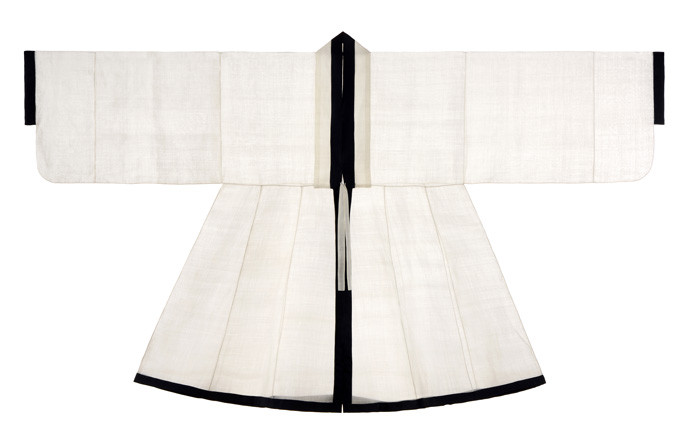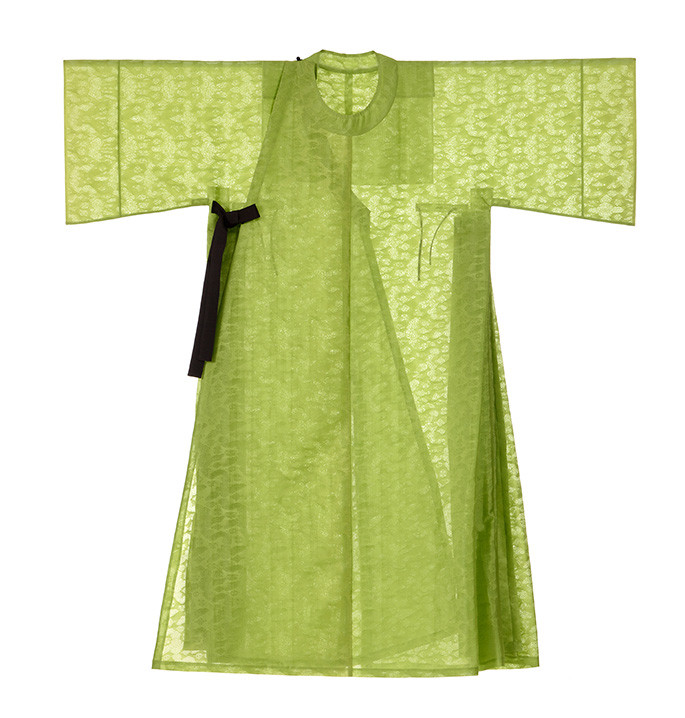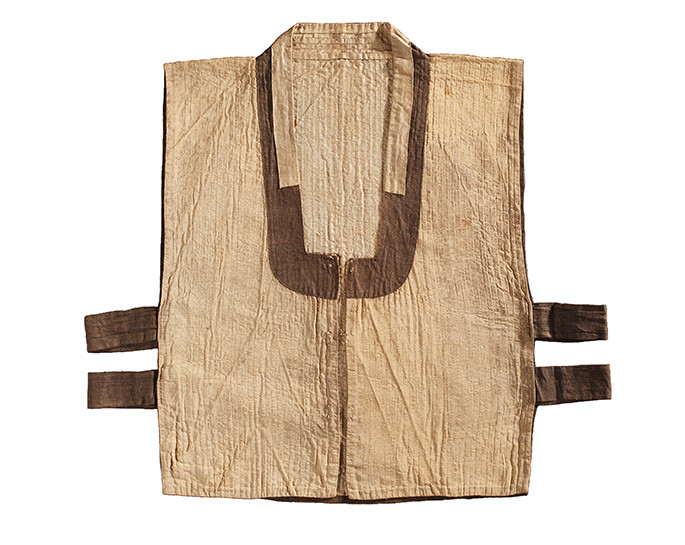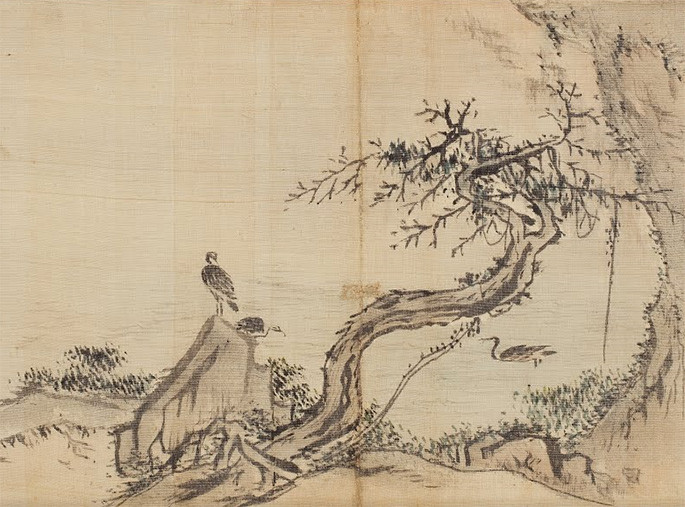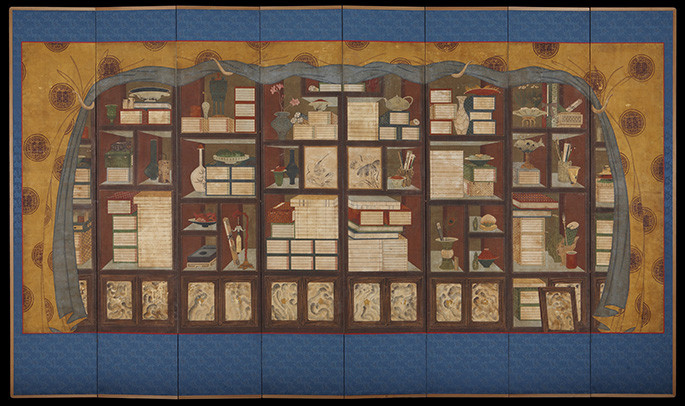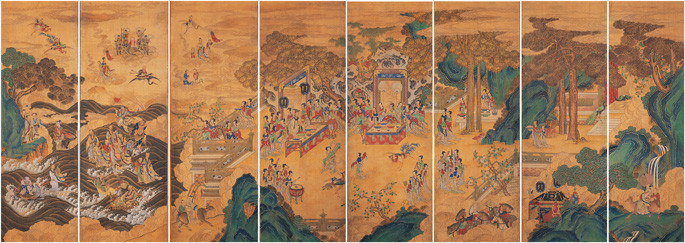Exhibition
-
Online exhibition The Costume, the Pattern of Joseon Dynasty: Confucian Scholars’ Ceremonial Robe, White Sim-ui
Sim-ui, the symbol of confucian scholar, had a separate upper bodice part and a lower skirt part that were stitched together in one piece and reached the ankle. There were two types of Sim-ui: one with a straight collar, and another with square collar
-
Online exhibition The Costume, the Pattern of Joseon Dynasty: Women’s Ceremonial Robe, Green Wonsam
Wonsam as women’s ceremonial robe was originally reserved for the upper class women but was allowed as bridal attire for lower class women in the late Joseon dynasty.
-
Online exhibition The Costume, the Pattern of Joseon Dynasty: Men and Women’s Vest, Baeja
Baeja was a vest worn over jackets, and was worn by both men and women. It was also called Deung-geo-ri or Bae-geo-ri. Most Baeja had center-front opening, and its opening was buttoned or tied with straps.Gyeonggi Provincial museum possesses various types of vests: long ones, short ones, and ones with their back shorter than front, etc.
-
Online exhibition The Collection of Gyeonggi Provincial Museum
The long history of Gyeonggi-do from the Paleolithic Age to the Unified Silla Period is presented through 250 diverse artifacts including stoneware, earthenware, bronze ware, ironware, and roof tiles.
-
Online exhibition Chaekgado by Jang Han-jong
‘Chaekgado’ or ‘chaekgeori’ designates still-life paintings that depict mostly books and other associated objects such as decorative bibelots, antiques, stationery items and flowers.
-
Online exhibition Yojiyeondo
Taoists believed in the existence of the land of immortals, a paradise or utopic land where there is no aging and death.











